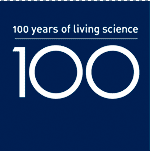Timeline
- 1845 – 1899 |
- 1900 – 1909 |
- 1910 – 1919 |
- 1920 – 1929 |
- 1930 – 1939 |
- 1940 – 1949 |
- 1950 – 1959 |
- 1960 – 1969 |
- 1970 – 1979 |
- 1980 – 1989 |
- 1990 – 1999 |
- 2000 – present
Imperial College 1845 - 1899
World
 1851 - Great Exhibition of 1851
1851 - Great Exhibition of 1851
The Great Exhibition of the Works of Industry of all Nations was organised by Prince Albert, Henry Cole, Francis Fuller and other members of the Royal Society for the Encouragement of Arts, Manufactures and Commerce as a celebration of industrial technology and design. The Great Exhibition made a surplus of £186,000 which was used to found the Victoria and Albert Museum, the Science Museum and the Natural History Museum which were all built in the area to the south of the exhibition, nicknamed "Albertopolis", alongside the Imperial Institute.
College
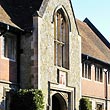 1447 - Wye College
1447 - Wye College
Wye College was first instituted as the College of St Gregory and St Martin by Archbishop John Kempe and it opened in 1447 as a college of secular priests. Its life as a theological establishment ended in 1545 because of the dissolution of the monasteries. It then became Wye Grammar school in which were taught '...boys and youths of Wye'.
In the 1700s, a charity school for the poor of Wye, was established alongside the Grammar School. The charity school became a County Council primary school in 1894 and moved to another site in the village of Wye. The Grammar School closed in 1889 and a new college then took shape on the original site. This was to be the true precursor of Wye College, the South-Eastern Agricultural College (SEAC), which opened on 29th November 1894. Four years later, SEAC became the School of Agriculture of the University of London. Prior to the establishment of agricultural teaching at Wye the Normal School of Science, later the Royal College of Science, had run a three year course in agriculture, at South Kensington.
SEAC, like the Constitutent Colleges of Imperial, aimed at providing high level technical and scientific training, in their case in agriculture and the sciences applied to it. The intention in SEAC was to train student farmers and agricultural administrators for work in the UK and abroad. It had its own working farm, used for practical instruction besides the lecture based courses. The breeding research role of SEAC was established with various livestock: sheep, cattle and pigs. Arable land, plus hop, fruit and vegetable gardens were used for experimental work, as was the dairy school. Bee and poultry keeping, farrier work and carpentry were all taught. Agricultural economics, a relatively new subject for academic teaching, was well established at SEAC by the end of the nineteenth century. SEAC was also strong in scientific teaching with well equipped chemistry, biology and botany laboratories.
back to top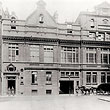 1823 - Charing Cross Hospital Medical School
1823 - Charing Cross Hospital Medical School
The origins of the Charing Cross Hospital Medical School can be found at a meeting of gentlemen at the home of Dr Benjamin Golding to discuss setting up a charitable institution to be known as the West London Infirmary. This was to be a hospital with training facilities, to supply the want of a University, so far as medical education is concerned’. Golding drew up a medical education plan in 1822.
The hospital opened in 1823 in Villiers Street and in 1827 was named Charing Cross Hospital. New Medical School facilities opened in Agar Street in 1834 with 22 students, and again in Chandos Place in 1881. The School was enlarged in 1894, adding physical, biological and pathological laboratories and the curriculum was lengthened from 4 to 5 years.
19th Century alumni from the School include the explorer David Livingstone who was a student there between1839-1840. T.H. Huxley took his medical training at the School, publishing his first paper in 1845 whilst a student ‘On a hitherto undescribed structure in the human hair sheath’. It describes the inner layer of the root sheath of the hair follicle since known as Huxley’s layer.
back to top 1834 - Opening of Westminster Hospital Medical School
1834 - Opening of Westminster Hospital Medical School
The Westminster Hospital Medical School began in 1834 and, by 1837, each surgeon was allowed three 'cubs', as the students were known. Formal development for training and provision of a building in Dean Street were made in 1841. After financial difficulties in 1847-1848, the School was re-launched in 1849 and a museum of anatomy established.
The lecturers effectively subsidised the students as they financed the School by paying into the School fund an amount equal to the value of their Chair. A purpose built School behind the hospital was opened in 1852, but as the School expanded, a new building was required and opened in Caxton Street in 1885.
The School's 19th Century famous alumni include John Snow, anesthetist and epidemiologist who administered chloroform to Queen Victoria during childbirth in 1853 and 1857. He identified the source of the 1854 Golden Square outbreak of cholera as being the water supply in Broad Street. The water pumps were shut down and the epidemic subsided.
 1845 - Creation of the Royal College of Chemistry
1845 - Creation of the Royal College of Chemistry
The Royal College of Chemistry was founded in 1845 by subscription as a necessary national resource for industrial and technical development. Royal patronage came from Prince Albert, who was President of the Council. The founders, John Lloyd Bullock and John Gardner appointed August Wilhelm Hofmann as the first Professor. He held the post until returning to Germany in 1865.
The College was situated in Oxford Street, backing on to Hanover Square. In 1853 the Royal College of Chemistry merged with the Royal School of Mines based in Jermyn Street, though teaching continued at the Oxford Street premises until the removal of much of the School of Mines teaching to South Kensington in 1872.
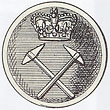 1851 - Creation of the Royal School of Mines
1851 - Creation of the Royal School of Mines
The Government School of Mines and of Science as Applied to the Arts was founded by Sir Henry de la Beche in 1851. He also largely founded and was Director-General of the Geological Survey of Great Britain, responsible for the Museum of Economic (later Practical) Geology, the Library of the Museum and Survey and the Mining Record Office.
De la Beche created a school which laid the foundations for the teaching of science in Britain, and which has its legacy today at Imperial. Prince Albert was a patron and supporter of the later developments in science teaching, which led to the Royal College of Chemistry becoming part of the Royal School of Mines and to the creation of the Royal College of Science and eventually to these institutions becoming part of his plan for South Kensington being an educational region.
Listen to Dr S W Smith describe, in 1957, a memorable lecture in the RSM that he attended in 1897
 1854 - St Mary's Hospital Medical School established
1854 - St Mary's Hospital Medical School established
St Mary's Hospital was founded in 1845 by Samuel Lane, surgeon and anatomist, and from its inception was intended to be a teaching hospital. It opened in 1851 with two students. The Medical School was founded in 1854 and the number of students soon rose to 40. Samuel Lane donated his collection of specimens for the pathological museum at the hospital.
The School gradually grew and in the 1880s there was a much needed expansion of facilities, with pathology laboratories particularly being enhanced.
Famous alumni include The Lien Wu who entered the School on a Scholarship in 1899. He returned to China and became Director of the Imperial Army Medical College, was Chief Medical Officer to the Manchurian Plague Service and an historian of Chinese medicine.
Sir Almroth Wright joined St Mary's in 1902 as Director of the Inoculation Department, later the Wright Fleming Institute until 1946. His great contribution to medicine was vaccine therapy, which was to be so effective in saving the lives of men of the allied armies during the Great War.
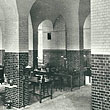 1881 - Creation of the Royal College of Science
1881 - Creation of the Royal College of Science
In 1881 the Normal School of Science was established which quickly changed its name to the Royal College of Science. The title Normal had been intended by T.H. Huxley to indicate the high status of the School as in the Ecole Normale in Paris. This did not translate well into the English language and was altered in 1890. The main objective was to support the training of science teachers (other students were admitted) and to develop teaching in other science subjects alongside the Royal School of Mines earth sciences specialities.
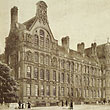 1884 - Creation of City and Guilds College
1884 - Creation of City and Guilds College
The Central Institution, later to become the City and Guilds College, was established by the City Livery Companies under the City and Guilds of London Institute. Unable to find a site in the City, they first set up the Finsbury Technical College. This was intended as a feeder school for the main College. As no other site became available in the City the CGLI were persuaded by General Sir John Donnelley, Secretary of the Science and Art Department, to build on land in South Kensington bought by the profits of the Great Exhibition of 1851 'for purposes of art and science' in perpetuity.
The Central Institution building was designed by Alfred Waterhouse, the architect responsible for the Natural History Museum. The City and Guilds Waterhouse building opened in 1884 and full time teaching began in 1885.
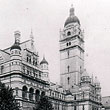 1893 - The Imperial Institute opened
1893 - The Imperial Institute opened
The Imperial Institute was created in 1887 to celebrate Queen Victoria's Jubilee with the intention of it being a scientific research institution exploring and developing the raw materials of the Empire countries. It was administered by a Governing body with the then Prince of Wales as President.
The Imperial Institute building was constructed in South Kensington between 1888 and 1893. Queen Victoria laid the foundation stone in 1888 and opened the building in 1893. The Institute building spanned from the Queen's Gate side, to where Mechanical Engineering now stands. It faced the Imperial College Road (which then was called the Imperial Institute Road and was open to traffic).
The Imperial Institute was designed by T. E. Collcutt in the neo-renaissance style. It was 700 feet long with a central tower (the Queen's Tower) and smaller towers at the east and west ends. It contained a library, laboratories, conference rooms and exhibition galleries with gardens at the rear.
People
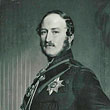 1845 - Prince Albert
1845 - Prince Albert
Prince Albert, the Prince Consort was the youngest son of the Duke of Saxe-Coburg-Gotha and 1st cousin to Queen Victoria whom he married in 1840. He supported the Queen in her role and developed his own interests in furthering educational aims and promoting social reforms. For example he designed model cottages, simple homes with light and ventilation unlike the cramped town accommodation and slums many workers had to endure.
As a patron of the arts and sciences, Prince Albert supported the Royal College of Chemistry in 1845 and the Royal School of Mines in 1851 as Patron of both. He also devised and oversaw the Great Exhibition of 1851. It was Prince Albert’s idea to use the profits of the Great Exhibition to develop an educational area in South Kensington, to include museums and scientific and arts educational institutions. He died of typhoid in 1861.
back to top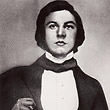 1856 - W H Perkin
1856 - W H Perkin
William Henry Perkin (1838-1907) discovered the first coal tar dye, mauveine (an aniline dye) – the first synthetic purple coloured dye in 1856 – founding a new industry which revolutionised fabric colouring and on which modern pharmaceuticals are based. His discovery led to organic chemistry becoming an applied science. Purple had been an expensive colour to create, hence the expression royal purple, but Perkin’s discovery took this and other bright colours to the masses. Mauveine was used in fabric colouring and on a stamp – the penny purple.
A piece of silk dyed using the original Mauve and presented to Queen Victoria at the 1862 Exhibition is in the College Archives, as is a piece given by I.C.I. to Assistant Professor of Organic Chemistry, Martha Annie Whiteley in 1946. She was awarded the OBE in 1920 for her chemical work for the 1st World War.
back to top Thomas Henry Huxley (1825-1895)
Thomas Henry Huxley (1825-1895)
Thomas Henry Huxley began his scientific career in 1841 as a doctors' apprentice, and then studied at Charing Cross Hospital, London. The highest exam he ever took was the first part of the London M.B. for which he won the Gold Medal for Anatomy and Physiology. However he was to make his name as a respected research scientist and educator, with no further qualifications or titles except those conferred on him as honorary degrees. Right Honourable was added to these when he became a member of the Privy Council towards the end of his life.
Huxley was an energetic man, working tirelessly at the Royal School of Mines, as first Dean of the Normal School of Science - Royal College of Science, and for the wider scientific community. Known as "Darwin's Bulldog", he supported Charles Darwin's theories of evolution in the face of great opposition. He took up the cause of Technical Education and fought vested interests to get it recognised and properly funded. Realising that scientists needed a good preliminary grounding, he supported the new Bills for Education, and on election to the London School Board was instrumental in structuring it and London elementary education.
Huxley contributed a great deal to scientific knowledge, three of his greatest achievements are: showing that jellyfish, like animals, were composed of two layers, suggesting that birds are descendents of dinosaurs and introducing the public to the idea of man's Neanderthal forebears.
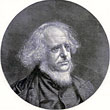 Sir Henry Cole (1808-1882)
Sir Henry Cole (1808-1882)
Sir Henry Cole was a man of many interests, always public spirited. He worked in public office for 50 years, first in the Records Office, rising to Assistant Keeper of Public Records where he improved the systems of the Public Record Office. Whilst at the Record Office, he contributed to the development of the Penny Postage system in 1840 and also, under the name Felix Summerly, wrote educational books for children on public institutions such as the National Gallery and wrote for adults on design.
He began to organize exhibitions of industrial manufactures as part of his interest in art and design, in 1845, some with the Royal Society of Arts. He believed it important that British manufacture and design should be seen and new ideas developed and encouraged. He produced reports on the Patent Laws which led to an amending Act being passed.
Sir Henry Cole saw the need for an exhibition of manufacturing art and skills in Britain. He was instrumental in establishing the Royal Commission for the Great Exhibition of 1851, with Prince Albert, who was its President. Sir Henry advised on the use of the profits and supported the development of land and institutions in South Kensington using these. In 1852 the Board of Trade set up a Department of Practical Art with Cole as joint secretary with Lyon Playfair. This became the Department of Science and Art in 1853; Cole was its Secretary for 23 years. Cole established the South Kensington Museum (the precursor institution to the Victoria and Albert Museum) and was its first Director. He also invented the Christmas card.
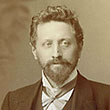 William Edward Ayrton (1847-1908) and John Perry (1850-1920)
William Edward Ayrton (1847-1908) and John Perry (1850-1920)
William Ayrton and John Perry worked closely together to develop ammeters at the City and Guilds Technical College.
William Ayrton (pictured left) passed with honours the first ever Bachelor of Arts examination in the University of London in 1867. He then worked for the Indian Government Telegraph Service, having come out with the top grade in their examination. Between 1873-1878 he was Professor of Natural Philosophy and Instructor in Telegraphy in the Imperial College of Engineering, Tokyo, Japan.
On return to England between 1879-1884 Ayrton became Professor of Applied Physics at Finsbury Technical College. From 1884 to 1908, he was Professor of Applied Physics and Electrical Engineering at City and Guilds Central Technical College, Kensington. In 1892, he became President of the Institute of Electrical Engineers.
John Perry attended Queen's College, Belfast. He was an electrical engineer and a mathematician. His first job was as a School teacher at Clifton College. He worked with Ayrton in Japan as Professor of Engineering. In 1881 he became professor of engineering and mathematics at Finsbury Technical College and in 1896 Professor of mathematics and mechanics at the Central Institution, retiring in 1914. During World War I he was an adviser on gyroscopic compasses. He insisted on the use of graph paper in classes.
Both Ayrton and Perry believed in teaching in practical and accessible ways. They were extremely inventive and applied their subject knowledge to the production of practical objects such as electrical instruments. They also wrote jointly about the magic Mirrors of Japan which relates to their optical properties and method of manufacture.
Ayrton and Perry worked together extensively, and collaborated to develop an ammeter, also working on other forms of measuring electricity, the electric tricycle, and a surface-contact system for electric railways.
In 1880, Ayrton and Perry devised the Permanent Magnet Ammeter, and by 1883 had devised a second form of ammeter, the Magnifying Spring Ammeter.
 W E Dalby (1862-1936)
W E Dalby (1862-1936)
Professor William Ernest Dalby produced a number of Balancing Engines in his work at Imperial College. These were important in the development of more efficient railway engines.
Dalby had worked at the Great Eastern Railway from the age of 14, and studied in his spare time. After achieving a BSc at London University, he taught at Cambridge between 1890 and 1896. Between 1896-1904, Dalby studied Engine Balancing and wrote the book The Balancing of Engines (published 1902).
He produced two, three, and four cylinder Balancing Engines and used them as teaching tools as well as working machines. The rationale behind engine balancing was to reduce undesirable effects such as unwarranted movement of parts of the engine and pressure on bearings. Such problems were caused by the forces necessarily running through an engine. Dalby saw that by balancing out the moving parts that this would help to eliminate such effects.
Dalby described the four-cylinder engine in his book as, "An apparatus which has been designed by the author to illustrate the principles of balancing reciprocating parts". This apparatus was designed to show the effects of running such a system unbalanced as well as balanced, so that the current would power the pistons to turn the wheels, without any additional movement.
Dalby was considered the authority in this field of engineering, but he also contributed widely to other areas during his time at the College between 1904 and 1931 when he retired. He was Dean of the City and Guilds College 1904-1931, Dean of the Faculty of Civil and Mechanical Engineering of London University 1908-1912 and became a Fellow of the Royal Society in 1913. Dalby's style was severe and demanding of both staff and students, but he was highly respected in the College and by the wider engineering and educational community. He was Vice-President of both the Institute of Mechanical Engineers and the Institution of Civil Engineers. He contributed to knowledge on the strength of screw threads, the mechanical properties of steel and optical recorders of load and elastic extension and devised and taught on the first course in aeronautics held at Imperial in 1909.
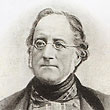 Henry de la Beche (1796-1855)
Henry de la Beche (1796-1855)
Henry de la Beche was founder of the Geological Survey of Great Britain, The Mining Record Office, The Museum of Economic Geology and the Government School of Mines of which he was the first Director. The Royal School of Mines developed out of these institutions with De la Beche as the driving force.
Largely self educated, particularly in geology, with a great facility for sketching and attention to detail, he disliked geological debate, theories and controversy and attempted to merely describe geological formations as he observed them. De la Beche worked for the Military Director of the Ordnance Survey on his geological mapping until the 1845 Geological Survey Act made the Survey a civil authority. (The Survey work first fell under the authority of the military Ordnance Office, whilst the Museum of Economic Geology was government supported and therefore civil.)
De la Beche worked consecutively for the civil and military authorities and he was not averse to going to the top in government circles (including to the Prime Minister Sir Robert Peel) when he wanted something for the Geological Survey and his other projects. The insignia of the RSM is derived from the buttons used on the uniforms of the Geological Survey staff whilst it was a military authority - a crown above two crossed hammers.
De la Beche knew the scientific community through his geological work, membership of the Geological Society, the Royal Society and the British Association for the Advancement of Science (BAAS). His geological researches which included so much travelling placed him well to assist with reports for the Commission on the Health of Towns. He was associated with Edwin Chadwick who was foremost in the Commission (Lyon Playfair was also a member) and Benthamite radicalism and the Society for the Diffusion of Useful Knowledge. He was a reforming slave owner, instituting systems of reward and care for workers on his Jamaican estate. When the income from the estates diminished, he had to ensure that his income came from other sources.
It was in his own interests to develop the Geological Survey, gain government support for it and show that it was indispensable to the good of the country and get it made official. He achieved his aims, but even so, initially much of the outlay for the work came from his own pocket so tardy were the government in voting adequate funds for it. His next great achievement was the Government support for the Royal School of Mines, the first such higher education institution.
 August Wilhelm Von Hofmann (1818-1892)
August Wilhelm Von Hofmann (1818-1892)
A.W. Von Hofmann was born in Giessen and studied under Liebig where he developed his interest in the organic bases of coal tar. When Hofmann was selected as the first Professor at the Royal College of Chemistry in London, he had a private laboratory in Bonn, was 'Privat Docent' lecturing on agricultural chemistry at Bonn University and continuing private research.
Prince Albert interceded with the German Government so that Hofmann was made Extraordinary Professor of Chemistry at Bonn with leave of absence for two years. Hofmann remained at the Royal College of Chemistry for twenty years, between 1845 and 1865. He then returned to Berlin in 1865 and worked until 1892. His pupil Perkin working at the RCC discovered the first aniline dye, derived from coal tar which he named Mauveine.
back to top
 General John Fretchville Dykes Donnelly (1834-1902)
General John Fretchville Dykes Donnelly (1834-1902)
General John Donnelly served in the Royal Engineers and was in charge of the division of sappers detailed to prepare the ground in South Kensington bought by the profits of the Great Exhibition of 1851 for the establishment of educational institutions and museums. He was therefore involved with Henry Cole on the scheme and his subsequent career was spent working on it. He was made inspector for science in 1872, then Director of Science and so became controller of the RSM and other relevant institutions. In 1881 he became Assistant Secretary of the Science and Art Department and in 1884 permanent head. He played a large part in the re-ordering of the RSM and RCS. He was knighted in 1893 and retired in 1899.
Although he was working for the Government, General Donnelly was still advanced by the army to the level of Major General in 1887. He is the source of the Gilbert and Sullivan song from the "Pirates of Penzance": I Am the Very Model of a Modern Major General.
back to top
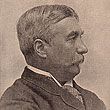 Norman Lockyer (1836-1920)
Norman Lockyer (1836-1920)
The 1870-1875 Royal Commission on Scientific Instruction and the Advancement of Science recommended the setting up of a government Solar Physics Observatory. The Commission's Secretary was Norman Lockyer who was seconded to South Kensington by the War Office to establish The Solar Physics Observatory in 1875. He was appointed Lecturer in 1881, then professor in 1887 (the first such title to be created) in Astronomical Physics at the Normal School of Science. He also directed the independent observatory and began the loan collection of scientific instruments which became later became the Science Museum (on the same site).
He meticulously organised the Astrophysics teaching, preparing a students guide in the form of a handbook of observational and laboratory work. Students got two hours a fortnight in the observatory for practical work. He lectured himself, illustrating with charts and diagrams, and when not teaching visited the classes and discussed astronomical matters. In 1890 the Solar Physics Observatory became part of the Royal College of Science and had an importance second only to that of the Greenwich Observatory. Lockyer remained Director until his resignation on the Observatory's transfer to Cambridge in 1911.
He headed eight government solar eclipse expeditions and studied the relationships between solar activity and terrestrial phenomena such as the weather and famine in India.
Lockyer discovered the gas later to be named helium in the sun's spectrum in 1868, for which he was knighted, and was a pioneer in the observation of sunspots. He has been credited with being a founder of spectroscopy and of astroarchaeology - the science of recognising alignments of ancient stones with natural light sources
Lockyer founded the journal Nature in 1869.
He built an Observatory for his own use in Salcombe Hill, Sidmouth Devon in 1912.
© 2007 Imperial College London
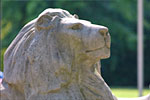
Through the first decade of the twenty-first century the campaign seeks to philanthropically raise £207 million from Imperial’s alumni, staff and friends, and donations from charitable foundations and industry.
Where your support can make a differenceGive now

We’re celebrating 100 years of living science with 100 stories. We’ve collected some of them already, and invite you to share your own stories and memories.

